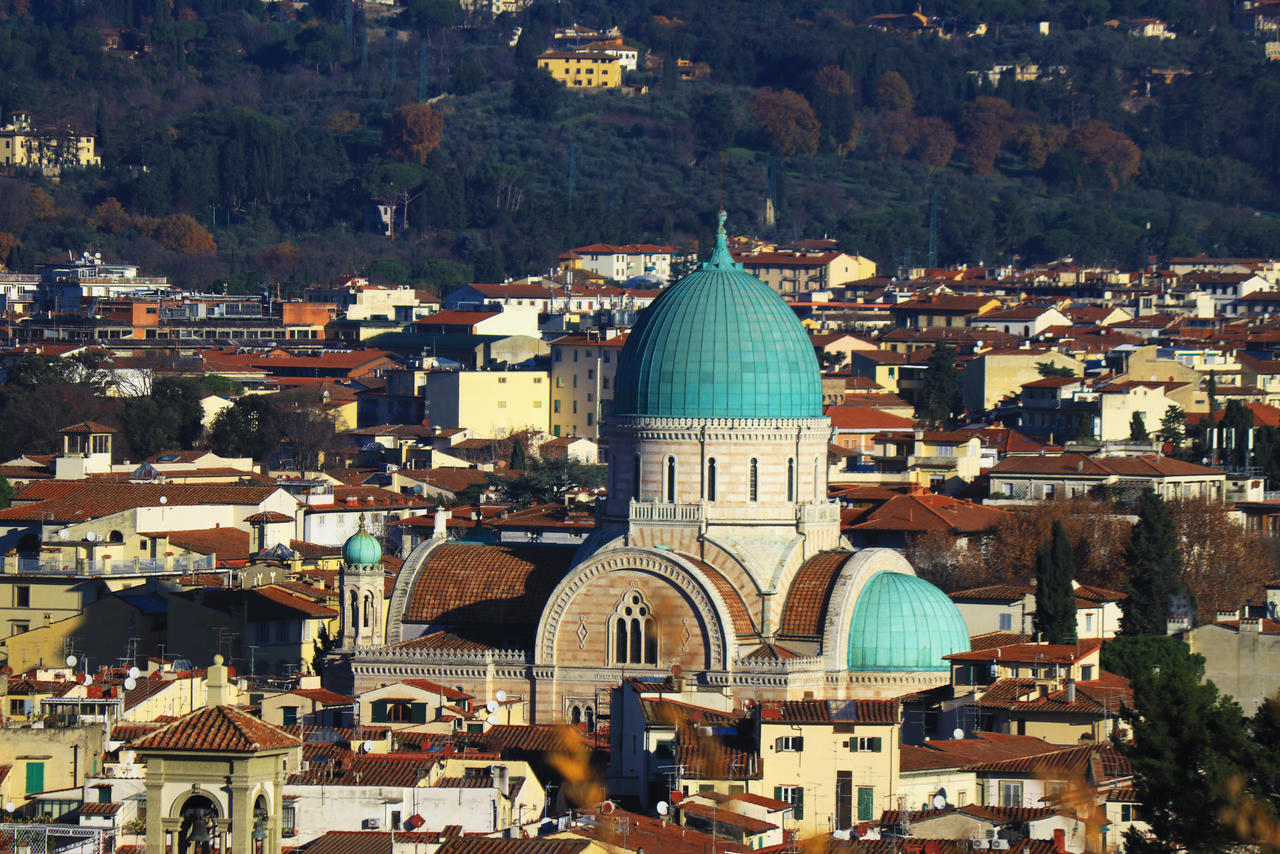The skyline of Florence is very characteristic, recognizable by anyone in the world; among the roofs stands the imposing Brunelleschi's Dome, Giotto's bell tower and the famous silhouette of the Ponte Vecchio. Among these, you also notice another church-like structure, surmounted by a green dome: it certainly does not go unnoticed.
It is a very unique architecture for Florence, and has nothing to do with the medieval or Renaissance structures of the city: it is the great Synagogue of Florence or "Tempio Maggiore Israelitico".
The story

The presence of the Jewish community in Florence has origins that date back to the early fourteenth century.
Protected by close ties to the Medici family, Florentine Jews were spared from repeated threats of expulsion that began in the fifteenth century. Segregated in a ghetto from 1571 until 1799, when Napoleonic forces occupied the city, the local community obtained full civil rights in 1848 with a new constitution and the ghetto was razed to the ground.
The Synagogue in Florence was built between 1874 and 1882 on a project by the architects Treves, Falcini and Micheli; its huge copper dome, marble façade and intricate interior decoration: the result is influenced by a number of architectural traditions.
The architecture of the synagogue in Florence

White travertine and pink limestone, typical of the Moorish style, blend with the Romanesque elements of the Florentine tradition, such as the partition and chromatism of the facades and the central plan. The decorative and furnishing elements are a product of Florentine craftsmanship, while Arab and Byzantine influences are evident in the decorations of the walls of the Great Synagogue of Florence.
Without a doubt it is a fine demonstration of eclecticism, which nevertheless respects the typical elements of the synagogue: the internal loggia for the separation of the faithful according to sex, the Sacred Ark, facing east, containing the sacred scrolls of the Torah and the pulpit from which the rabbi recites the prayers.
Enclosed by beautiful cast iron railings and surrounded by a garden, the Israelite Major Temple is a jewel and one of the largest synagogues in Europe.
Why visit it

The Great Synagogue of Florence is testimony to a long history: influenced by the Hagia Sophia in Istanbul, the synagogue is cruciform in style, with horseshoe arches flanking the facades and towers. It continues to be a center of worship and, as such, serves as a living memorial of jewish cultural heritage in our region, plus the history of the Florentine community can be traced back to the museum on the first floor, founded in 1981 and expanded in 2007.
Image sources: feeflorence, deviantart, firenze today, jewishflorence










 Map
Map